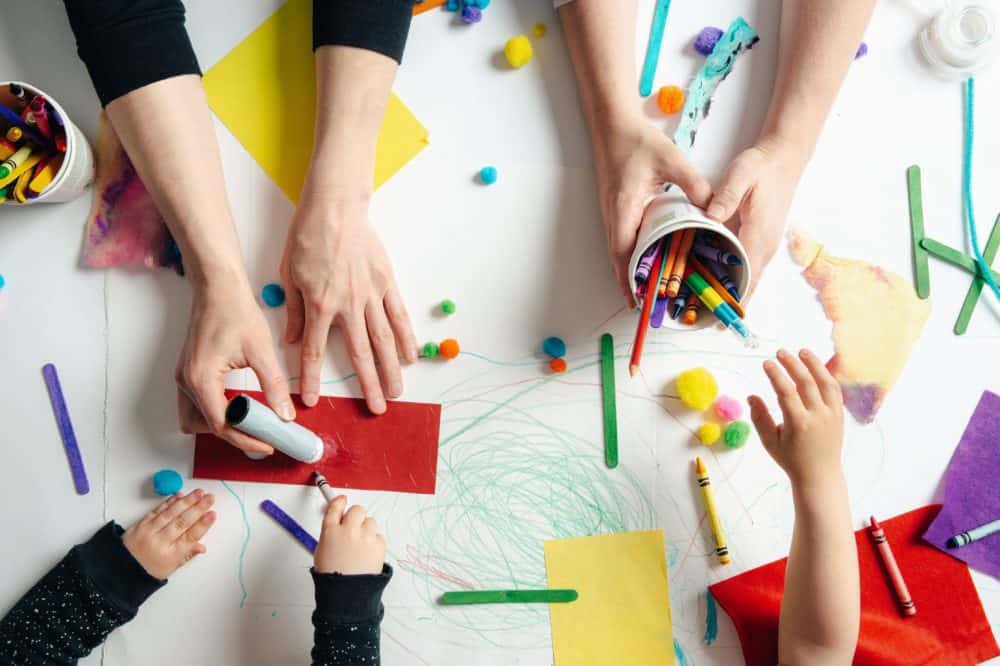
Are you looking for creative ways to engage and support children through art therapy? Look no further!
In this article, we will explore 12 engaging and therapeutic art ideas for kids, ranging from DIY photo frames to sensory art projects.
Each idea is designed to foster creativity, expression, and emotional well-being.
Whether you are a parent, teacher, or therapist, these ideas will provide you with valuable tools to help children explore their emotions and find freedom through artistic expression.
DIY Photo Frames
DIY Photo frames offer children an opportunity to showcase their creativity by designing and decorating their own unique frames for their favorite pictures. These frames not only serve as a way to display cherished memories but also allow children to express themselves artistically.
There are countless DIY photo frame ideas that can inspire young artists to create something truly special. From using recycled materials like cardboard and popsicle sticks to incorporating colorful beads, buttons, and ribbons, the possibilities are endless. Creative photo frame crafts can range from simple and minimalist designs to more elaborate and intricate creations.
Children can experiment with different textures, colors, and patterns to make their frames truly one-of-a-kind. This freedom to explore their imagination and personalize their frames can boost their confidence and foster a love for art.
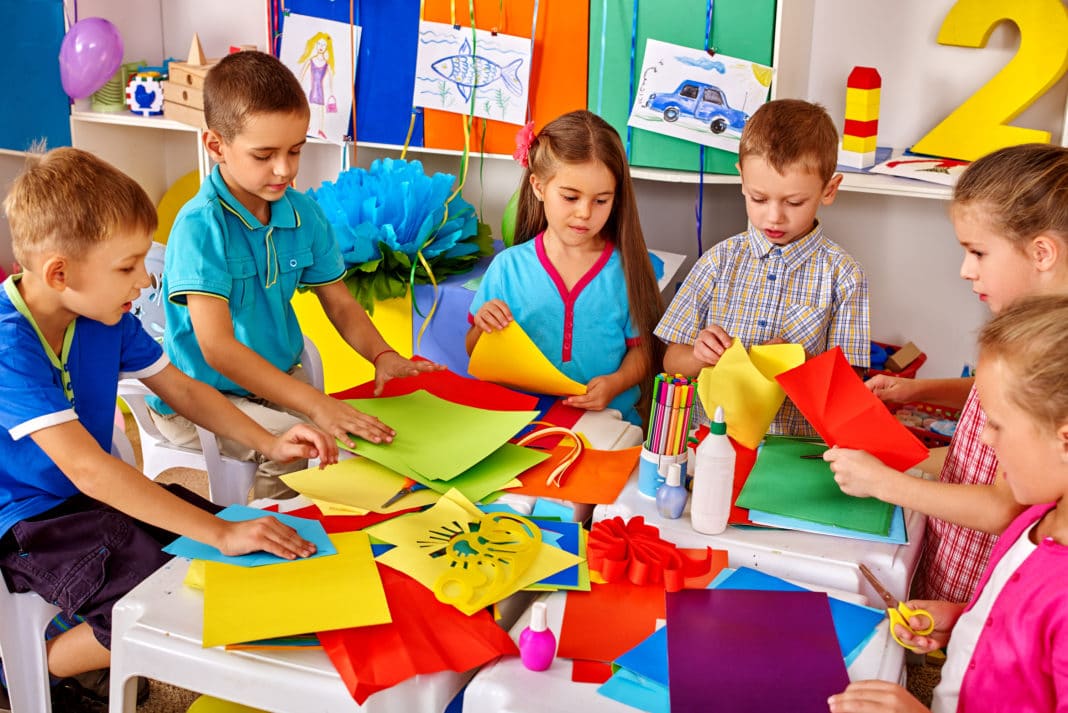
Feel Good Jars
One popular art therapy idea for kids is creating and decorating feel good jars, which can provide a tangible reminder of positive experiences by filling them with notes or objects that evoke feelings of happiness and gratitude.
Feel good jars are a wonderful way for children to engage in feel good activities and mindfulness exercises. Here are some ideas to get started:
- Fill the jar with colorful paper strips, each containing a happy memory or a positive affirmation.
- Decorate the jar with stickers, paint, or ribbons to make it visually appealing and personal.
- Encourage children to add small objects that hold sentimental value, such as seashells from a beach trip or a small toy that brings them joy.
- Use the feel good jar as a tool for reflection and gratitude by writing down one thing they are thankful for each day and placing it in the jar.
Feel good jars are not only a creative outlet but also a powerful tool for fostering positivity and mindfulness in children.
Calming Glitter Bottles
Calming glitter bottles can be a wonderful tool for promoting relaxation and mindfulness in children. These bottles provide a sensory experience that can help calm and soothe the mind, making them perfect for moments of anxiety or stress.
Whether you choose to make your own DIY glitter bottle or purchase one, the benefits of this simple yet effective therapeutic tool are undeniable.
Glitter Bottle Benefits
Using glitter bottles can provide a range of benefits for children, helping them to relax and focus their attention. Glitter therapy has gained popularity as a mindfulness exercise for kids, offering a unique way to engage their senses and promote emotional well-being.
Here are some of the benefits of using glitter bottles:
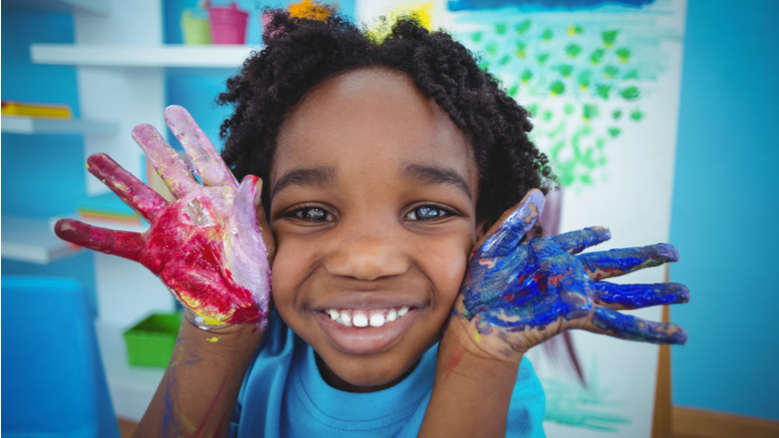
Calming effect: Watching the swirling glitter inside the bottle can have a soothing and calming effect on children, helping them to regulate their emotions and reduce anxiety.
Focus and concentration: Glitter bottles require children to concentrate on the movement of the glitter, which can improve their ability to focus and pay attention.
Sensory stimulation: The visual appeal of the glitter bottle combined with the gentle sound of the glitter moving creates a sensory experience that can be both calming and stimulating for children.
Self-expression: Glitter bottles can be customized with different colors and shapes, allowing children to express their creativity and individuality. This promotes a sense of freedom and empowerment.
Incorporating glitter bottles into children's routines can be a simple yet effective way to enhance their well-being and foster their creativity.
DIY Glitter Bottle
Creating a DIY glitter bottle can be an engaging and therapeutic activity for children. Glitter sensory bottles, also known as calming sensory bottles, provide a visually stimulating and calming experience for kids.
These bottles are easy to make and can be customized according to personal preferences. To create a DIY glitter bottle, you will need a clear plastic bottle, water, clear glue, glitter, and any additional decorative items such as beads or sequins.
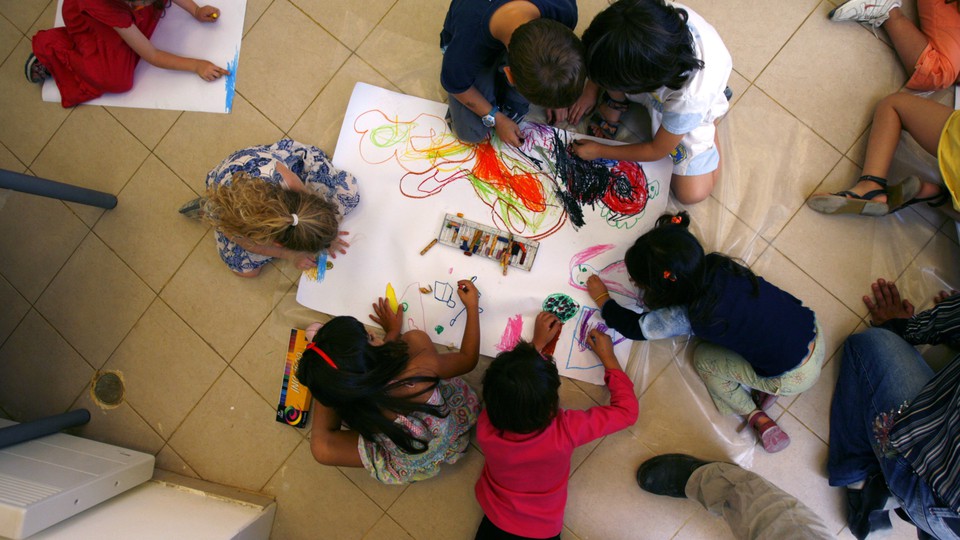
Simply fill the bottle with water, add the clear glue and glitter, and seal it tightly. Shake the bottle gently and watch as the glitter swirls and settles, creating a mesmerizing visual effect.
These calming sensory activities can help children relax, focus, and regulate their emotions, making them a valuable tool in managing stress and anxiety.
Sensory Experience With Glitter
For a multi-sensory experience that captivates and engages children, glitter bottles provide a mesmerizing visual display while also promoting relaxation and focus. These sensory art activities offer a range of benefits for kids, allowing them to explore their creativity while engaging their senses in a calming and soothing manner.
Here are four reasons why glitter sensory play is an excellent choice for children:
Sensory Stimulation: Glitter bottles provide a captivating visual experience that stimulates the sense of sight, allowing children to focus their attention and engage in mindful observation.
Calming Effect: The slow movement of glitter as it settles in the bottle can have a calming effect on children, helping them to relax and unwind during times of stress or anxiety.
Emotional Regulation: Glitter sensory play can assist children in regulating their emotions by providing a gentle distraction and a safe outlet for self-expression.
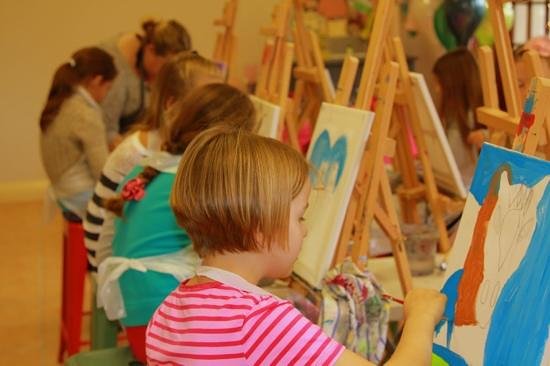
Sensory Integration: Engaging with glitter bottles can aid in the integration of sensory information, helping children to process and make sense of their surroundings.
Through glitter sensory play, children can explore their senses, express their emotions, and enhance their focus and relaxation skills. So, unleash your creativity and enjoy the magical world of glitter!
Positive Affirmation Cards
Crafted with care and designed to inspire, positive affirmation cards provide a powerful tool for nurturing self-esteem and fostering a positive mindset in children. These cards are a tangible reminder of the child's inner strengths, encouraging them to believe in their abilities and embrace their uniqueness.
Positive affirmation exercises and mindfulness activities are incorporated into the cards, allowing children to engage in self-reflection and cultivate a sense of gratitude and self-love. By using these cards regularly, children can develop a habit of positive thinking and learn to overcome self-doubt and negative self-talk.
The cards can be kept in a special box or displayed in a prominent place, serving as a visual reminder of the child's worth and potential. In a world that often focuses on criticism and comparison, positive affirmation cards provide a safe space for children to explore their emotions and build a foundation of self-confidence.
Emotion Rocks
During art therapy sessions, children can explore and express their emotions through the use of emotion rocks. These simple yet powerful tools allow kids to externalize their feelings and engage in a creative process that can be both therapeutic and empowering.
Here are some ways in which emotion rocks can be incorporated into art therapy sessions:
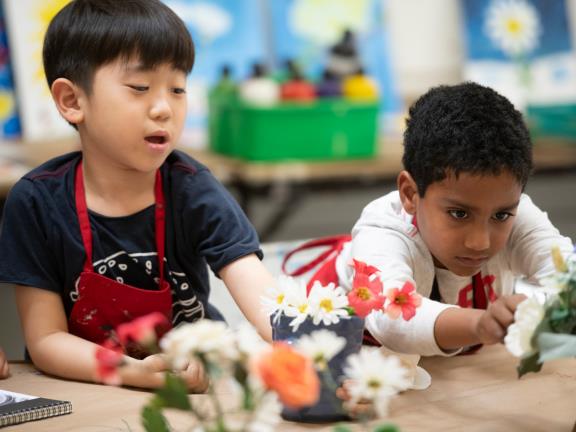
Painting and Decorating: Children can paint or decorate their emotion rocks with colors and patterns that represent their emotions. This allows them to visually express their feelings and create a tangible representation of their inner world.
Storytelling and Puppet Making: Emotion rocks can be used as characters in puppet shows or storytelling activities. Children can give their rocks names, personalities, and voices, allowing them to act out different emotions and explore different scenarios.
Group Activities: Emotion rocks can be used in group activities where children can share and discuss their rocks with each other. This fosters a sense of community and connection, as well as an opportunity for children to learn from and support each other.
Journaling and Reflection: Children can use their emotion rocks as prompts for journaling and reflection. They can write about why they chose a particular rock, what it represents to them, and how they are feeling when they look at it. This encourages self-awareness and introspection.
Dream Catchers
Through various materials and techniques, children can create personalized dream catchers as a symbolic representation of their hopes, dreams, and aspirations. Dream catchers engage creativity and promote a sense of calm and security.
Weaving colorful threads and adding feathers and beads, children design unique dream catchers. Hung above their beds, these captivate creations filter out bad dreams and allow only positive thoughts and aspirations.
Dream catchers facilitate self-expression, enabling children to explore desires and fears. This art therapy activity offers a safe space for children to connect with emotions, helping them process and understand dreams and aspirations.
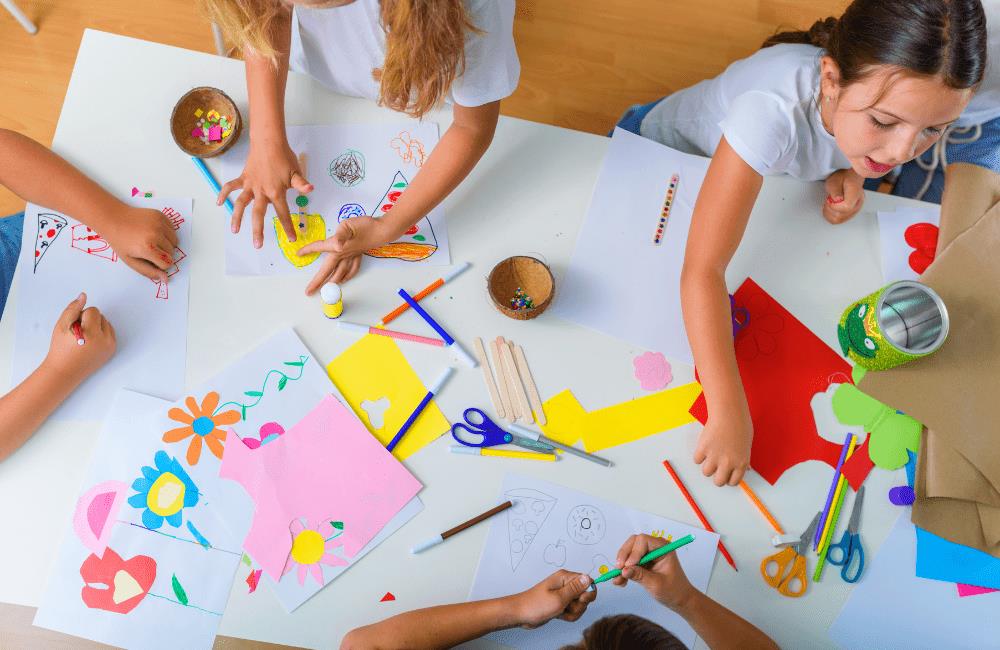
String Art
String art is a unique and captivating form of artistic expression that can engage and inspire kids of all ages. By using nails and colorful strings, children can create intricate designs and patterns that are visually stunning.
Not only does string art provide a creative outlet, but it also helps improve fine motor skills, hand-eye coordination, and concentration.
Unique String Art Designs
One can create captivating and intricate designs using string art, making it a unique form of artistic expression. With a variety of string art techniques and patterns to choose from, the possibilities are endless.
Here are some ideas to inspire your string art creations:
- Geometric Designs: Explore the beauty of symmetry by creating geometric patterns with intersecting lines and angles.
- Nature-Inspired Art: Bring the outdoors inside by depicting flowers, trees, or animals using string art.
- Personalized Names or Initials: Spell out your name or initials using string art to create a customized and meaningful piece of art.
- Abstract Creations: Let your imagination run wild and create abstract designs that reflect your emotions and personality.
String art allows you to experiment with different colors, textures, and patterns, giving you the freedom to express yourself in a truly unique way. So grab some string, a board, and some nails, and let your creativity flow!
Benefits of String Art
Two significant benefits of incorporating string art into art therapy sessions are its ability to enhance fine motor skills and promote relaxation.
String art techniques involve using strings or threads to create intricate patterns and designs on a surface. This requires precise movements and coordination, which can help children improve their hand-eye coordination and fine motor skills. As they manipulate the strings, they learn to control their movements and develop dexterity in their fingers.
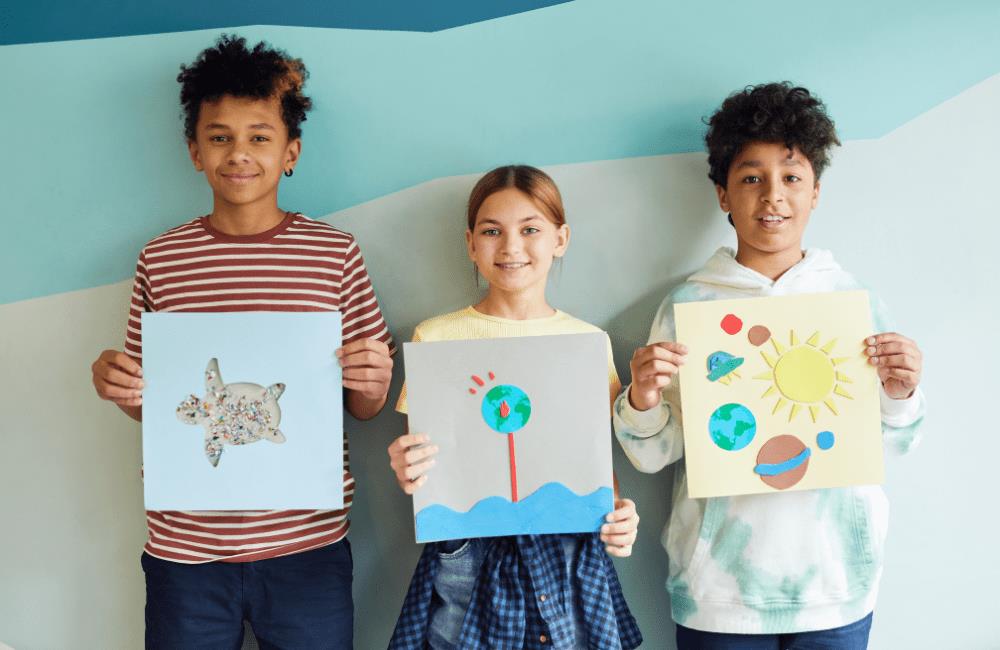
Additionally, string art projects for beginners can be a calming and meditative activity. The repetitive nature of wrapping and weaving the strings can help children relax and focus their attention, providing a sense of calm and freedom. This can be especially beneficial for children who struggle with anxiety or stress.
Incorporating string art into art therapy sessions can therefore offer both physical and emotional benefits to children, allowing them to express themselves creatively while also improving their motor skills and finding relaxation.
Story Stones
Story stones are a versatile and interactive art therapy tool that can engage children in storytelling and imaginative play. These small, smooth rocks can be painted or drawn on with various images or symbols that represent characters, objects, or settings. When children hold the story stones in their hands, they can create stories by selecting different stones and arranging them in different combinations. This activity encourages creativity, problem-solving, and communication skills.
Story stones can also be used to explore emotions and promote emotional expression. By incorporating emotion rocks into the collection of story stones, children can use these visual prompts to express and process their feelings in a safe and non-threatening way. This activity provides a creative outlet for children to explore and understand their emotions, fostering a sense of freedom and self-expression.
Puppet Making
Creating puppets is an engaging art therapy activity that encourages children to explore their creativity and express themselves through imaginative play. Puppet making allows children to bring characters to life and engage in storytelling, which can be therapeutic and empowering.
One technique that can be used for puppet making is paper mache. This involves shaping a puppet's body using wire or cardboard and then covering it with layers of paper and glue. The paper mache process allows children to experiment with different textures and shapes, while also developing fine motor skills.
Once the puppets are dry, children can paint and decorate them, adding their own personal touch. Through puppet making, children can explore their emotions, create narratives, and gain a sense of control and self-expression.
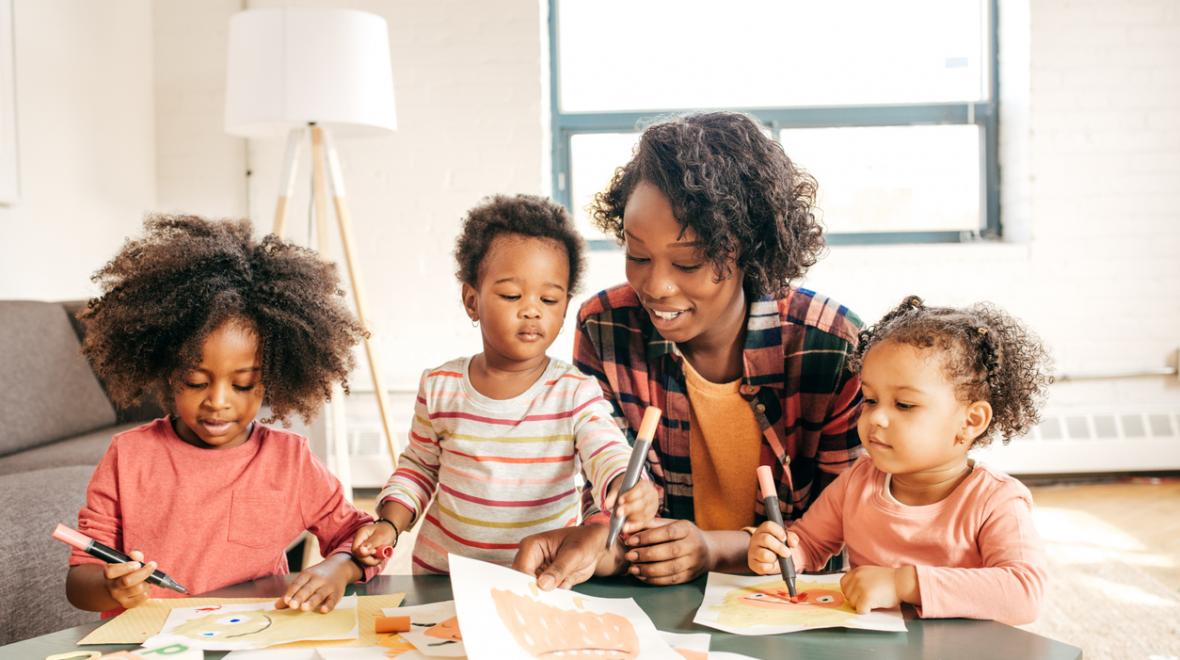
Textile Art
Textile art is a wonderful way for children to explore their creativity and express themselves. Through various techniques such as weaving, embroidery, and fabric painting, children can create unique and personalized pieces of art.
Not only does textile art provide a hands-on experience, but it also offers numerous benefits such as developing fine motor skills, boosting self-esteem, and fostering a sense of accomplishment.
Whether it's making a colorful tapestry or designing a one-of-a-kind pillowcase, textile art is sure to inspire and engage young artists.
Textile Art Techniques
The article will explore several unique textile art techniques that can be used by children to enhance their artistic skills and creativity. Textile art therapy can be a wonderful way for children to express themselves and explore their emotions through the medium of fabric and thread.
Here are some textile art techniques that can inspire children to unleash their creativity:
Fabric Collage: Children can cut out different shapes and patterns from fabric and glue them onto a canvas or a piece of cloth to create a colorful and textured collage.
Embroidery: Introducing children to basic embroidery stitches can allow them to create intricate designs and patterns on fabric, adding a personal touch to their projects.
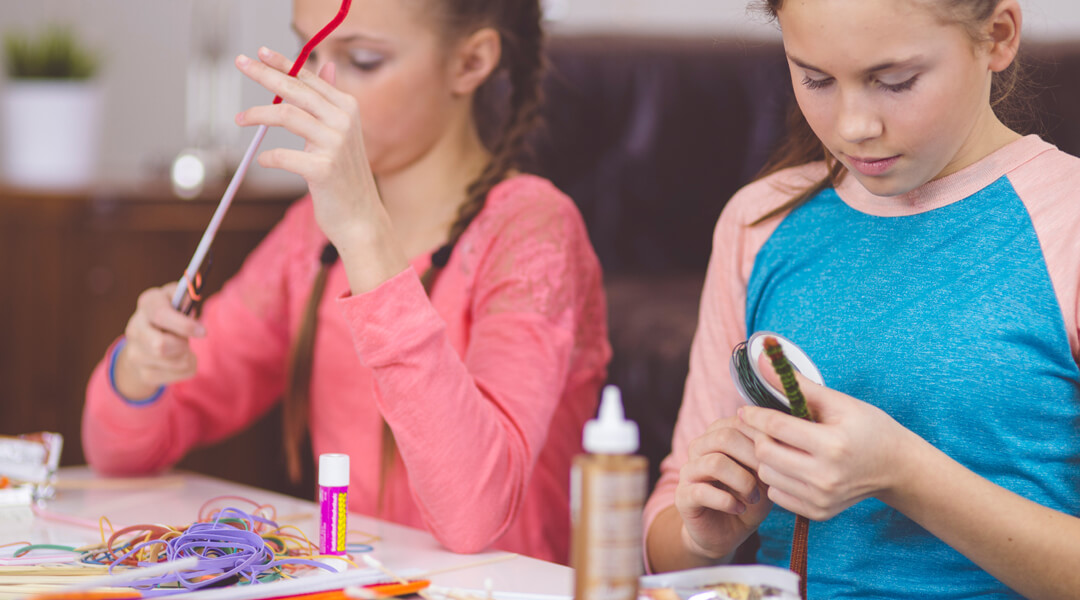
Shibori Dyeing: Using the ancient Japanese technique of Shibori, children can create unique patterns on fabric by folding, twisting, and binding it before dyeing.
Felt Making: Children can explore the process of felting by using wool fibers and water, creating their own felted fabric that can be transformed into various art pieces.
These textile art techniques encourage children to think outside the box and experiment with different materials, textures, and colors, fostering their artistic growth in a fun and engaging way.
Benefits of Textile Art
One of the key benefits of textile art is its ability to engage children in tactile exploration, promoting sensory development and fine motor skills.
Textile art therapy provides a unique opportunity for children to express themselves through fabric, thread, and other materials. By working with different textures, colors, and patterns, children can explore their creativity and develop a sense of self-expression.
Textile art also allows children to engage in a hands-on and immersive artistic experience, which can be therapeutic and calming. Additionally, this form of art promotes fine motor skills, as children manipulate and manipulate various materials to create their artwork.
Whether it's sewing, weaving, or fabric painting, textile art offers a wide range of techniques and possibilities for children to explore and express themselves freely.
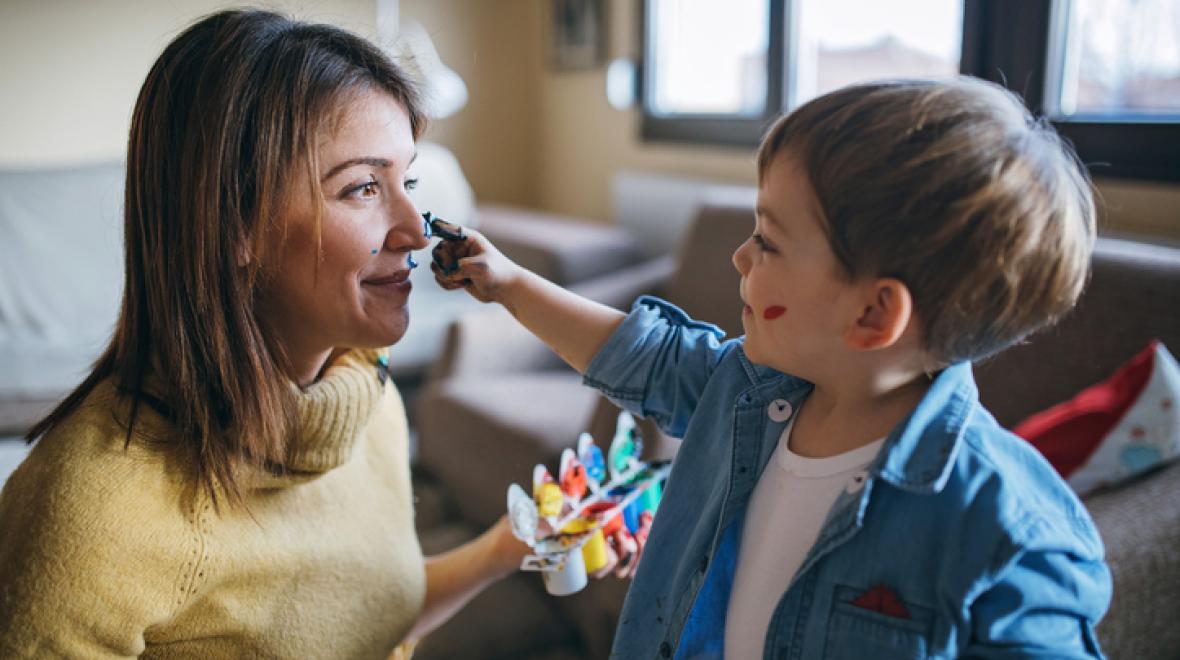
Textile Art Inspiration
To spark creativity in children, incorporate textile art into their artistic endeavors by introducing them to various techniques and materials, such as fabric painting, embroidery, and fabric collage. Textile art therapy offers a unique and engaging way for children to express themselves and explore their emotions. Here are some textile art therapy techniques to inspire kids:
- Fabric painting: Let children experiment with fabric paints and brushes to create vibrant and colorful designs on fabric.
- Embroidery: Teach children basic embroidery stitches and encourage them to create intricate patterns and designs on fabric.
- Fabric collage: Provide children with a variety of fabric scraps and teach them how to layer and assemble them to create unique collages.
- Textile printing: Introduce children to block printing or screen printing techniques, allowing them to transfer their designs onto fabric.
These textile art therapy techniques not only promote creativity and self-expression but also provide a therapeutic outlet for children to explore their emotions and enhance their overall well-being.
Paper Weaving
Regularly incorporating paper weaving into art therapy sessions can offer children a creative outlet for self-expression and promote fine motor skills development.
Paper weaving techniques allow children to explore different colors, textures, and patterns, giving them the freedom to create unique and personalized artworks. This creative paper craft encourages children to experiment with different materials such as construction paper, magazine cut-outs, or even recycled paper strips.
By weaving these materials together, children can express their emotions and thoughts in a tangible and visual form. The process of paper weaving also requires focus and concentration, helping children develop their attention span and hand-eye coordination.
Moreover, the repetitive nature of weaving can be calming and soothing, making it a therapeutic activity for children experiencing anxiety or stress.
Sensory Art Projects
Engage children in sensory art projects to stimulate their senses and foster creativity. Sensory exploration is a vital aspect of a child's development, allowing them to engage with their environment and express themselves freely. Tactile stimulation, in particular, can be incredibly beneficial in enhancing a child's sensory experiences.
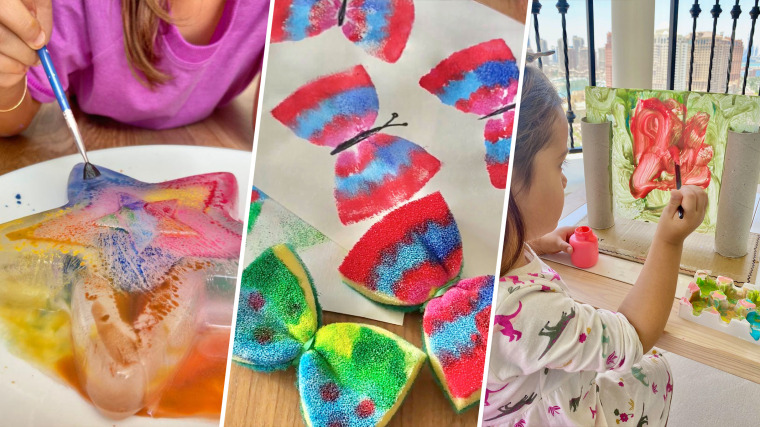
Here are some exciting sensory art projects that can captivate your child's imagination:
Squishy Paint Bags: Fill resealable plastic bags with paint and let your child explore colors and textures by squishing the paint around.
Nature Collage: Encourage your child to collect various natural materials like leaves, flowers, and sticks. They can then create a collage using these items, stimulating their sense of touch and creating a beautiful piece of art.
Sensory Bottles: Fill clear plastic bottles with different materials such as water, glitter, beads, or sand. Your child can shake, tilt, and observe the mesmerizing sensory effects.
Texture Rubbings: Place various textured objects like leaves, fabrics, or coins under a piece of paper and have your child use crayons or pencils to create rubbings, exploring different textures and patterns.
These sensory art projects provide an opportunity for your child to engage in hands-on exploration, allowing them to unleash their creativity while developing their senses. So, let their imagination run wild and watch as they discover the joy of sensory art.
Frequently Asked Questions
How Do I Choose the Right Materials for DIY Photo Frames?
When choosing materials for DIY photo frames, it is important to consider factors such as durability, aesthetic appeal, and ease of use. Select materials that align with your creative vision and provide a secure and visually pleasing frame for your photos.
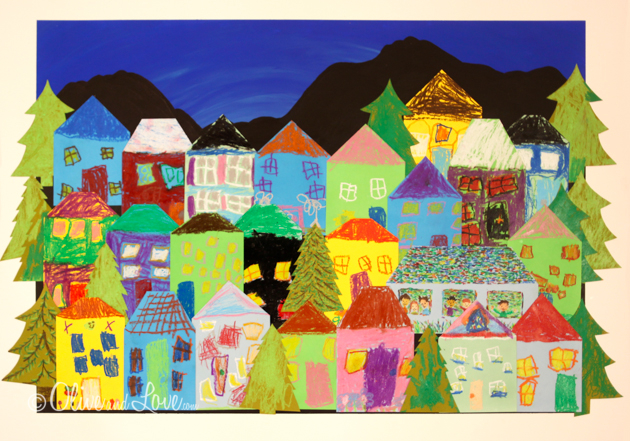
What Are Some Tips for Creating a Visually Appealing Feel-Good Jar?
When it comes to creating a visually appealing feel-good jar, there are several tips and ideas to consider. From choosing vibrant colors to incorporating uplifting quotes, there are different ways to decorate a feel-good jar that can bring joy and positivity into one's life.
Calming glitter bottles can indeed be used as a therapeutic tool for adults. They offer stress relief and promote relaxation through the visual and sensory experience. Art therapy for adults has various benefits, including self-expression and emotional healing.
How Can Positive Affirmation Cards Be Incorporated Into a Child's Daily Routine?
Positive affirmation cards can greatly benefit a child's self-esteem and confidence building. Incorporating them into a daily routine can be done creatively through activities such as morning affirmations, bedtime rituals, or by creating a display board for visual reminders.
Are There Any Specific Emotions or Themes That Should Be Depicted on Emotion Rocks?
Emotion rocks are a valuable tool in art therapy, allowing children to express and explore their emotions. By incorporating specific emotions or themes onto the rocks, therapists can create a safe space for children to process and communicate their feelings effectively. The benefits of using emotion rocks in therapy sessions are numerous, including increased self-awareness, emotional regulation, and creativity.
 Kids Art ProjectsParty PlanningPaper CraftsOrigami for KidsPrivacy PolicyTerms And Conditions
Kids Art ProjectsParty PlanningPaper CraftsOrigami for KidsPrivacy PolicyTerms And Conditions
